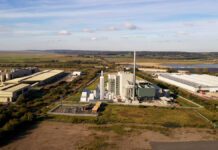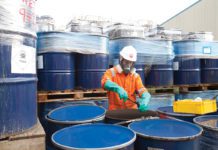
A growth in the use of waste to energy plants has made the treatment of the resultant waste a growing priority. Cleansing Services Group (CSG) has in recent months begun to offer a proprietary process at its Cadishead facility, near Manchester, which is capable of treating Air Pollution Control (APC) residue to the point where it is ready for disposal in landfill.
This kind of waste contains lime-based residues with hazardous materials like heavy metals and chlorides, according to CSG, quoted in a recent article in Waste Management World, making it unsuitable for landfill because of the risk of leaching.
However the lime-rich content of these ashes also gives them useful pozzolanic properties, so the material behaves in a cement-like fashion. In CSG’s process the residues are blended with non-hazardous liquid wastes in a manner that immobilises the leachable metals and solidifies the liquid to produce a waste material compliant with the Landfill Waste Acceptance Criteria.
The process has received a permit from the EA and has been put through a 12-month trial, says CSG. It is also suitable for treating dusty wastes that might be hazardous to handle by other means.
According to WMW, incinerator residue volumes have been increasing, with an estimated 170k tonnes of APC residue being created in the UK every year. CSG’s operations manager Jen Cartmell said the firm has invested £100k in developing this solution and is hoping for an expansion in this part of its business.







